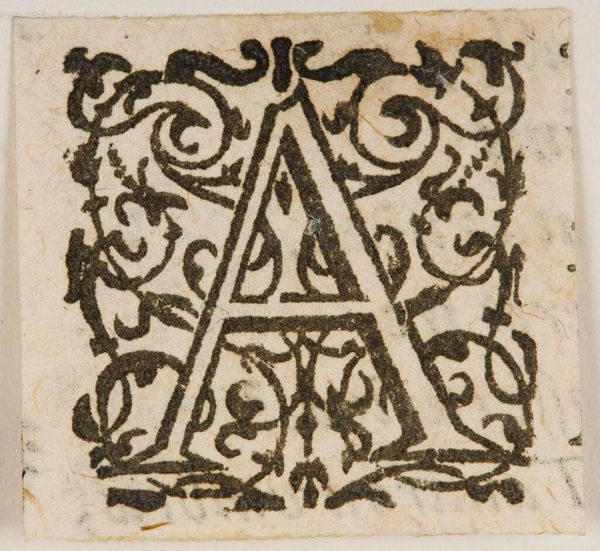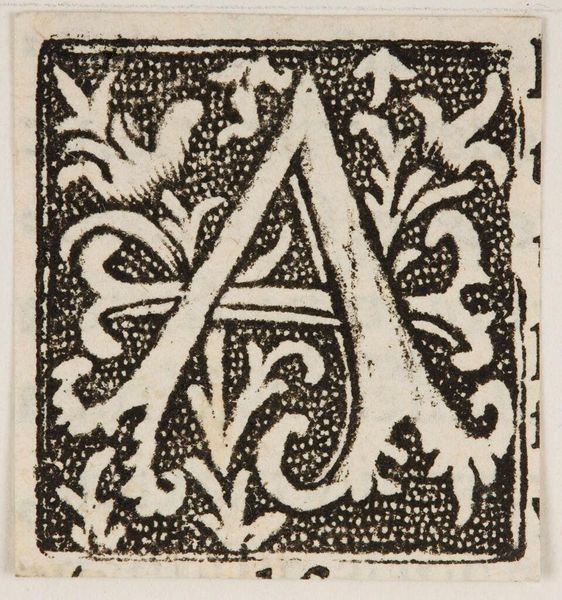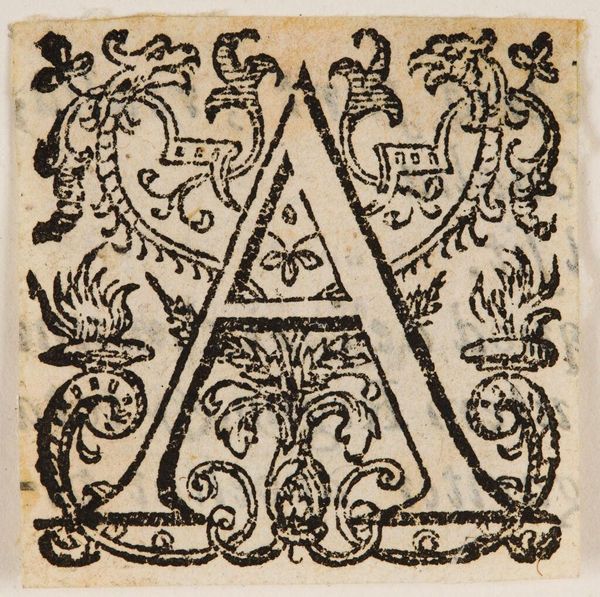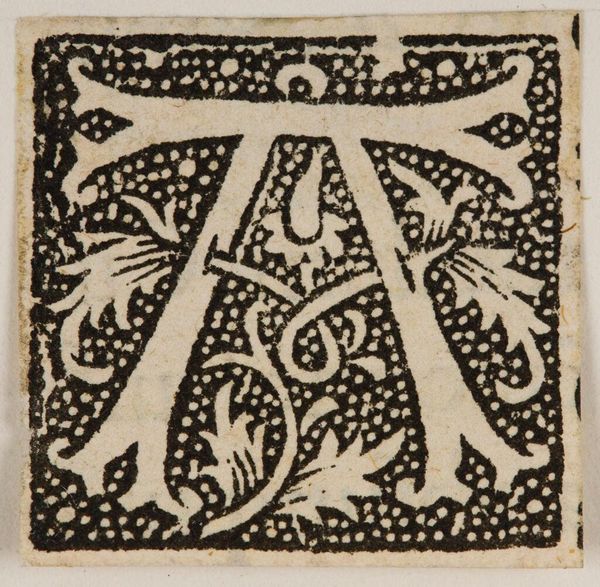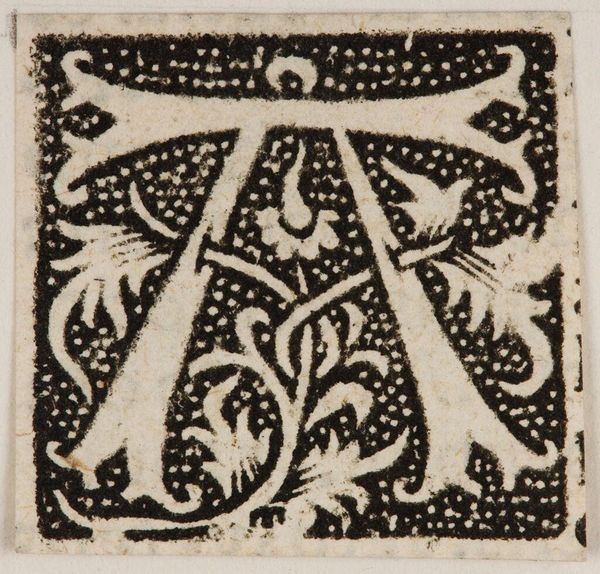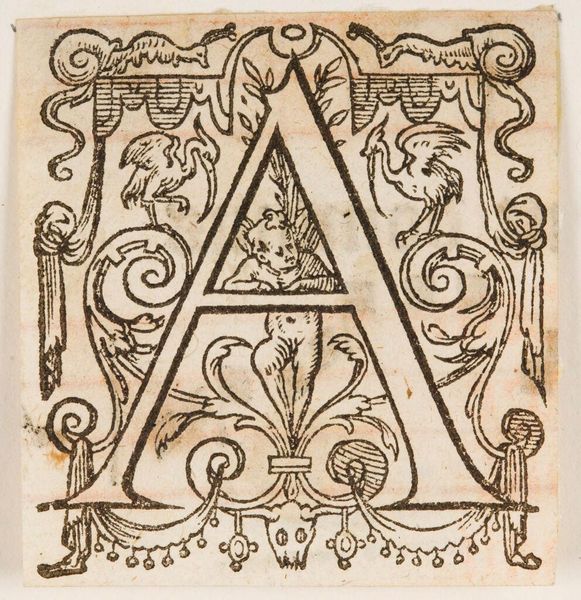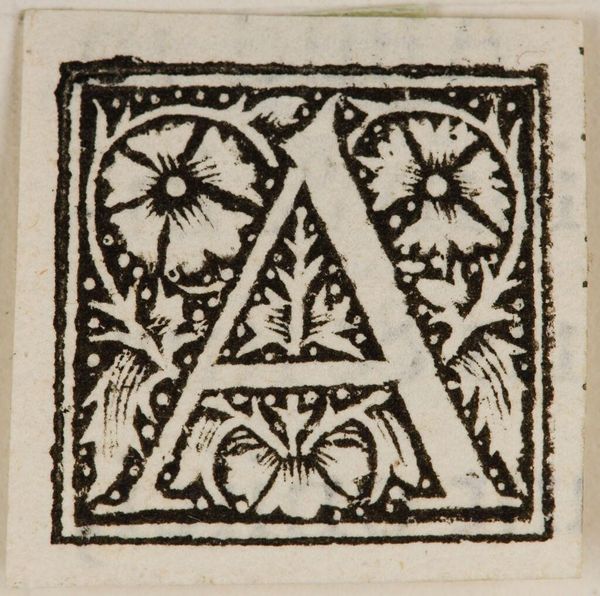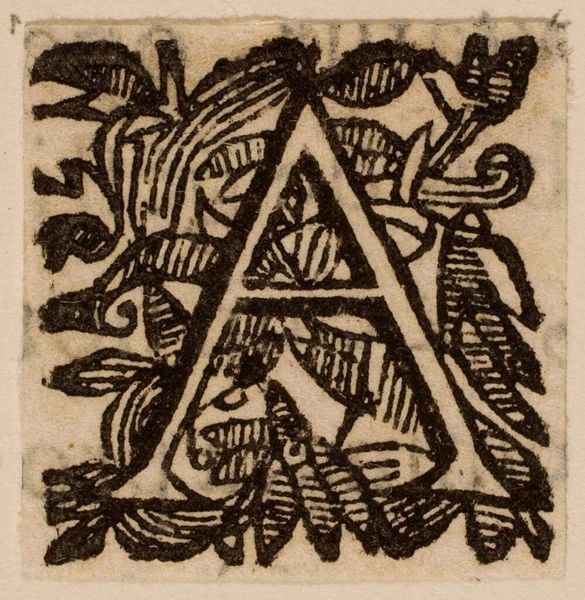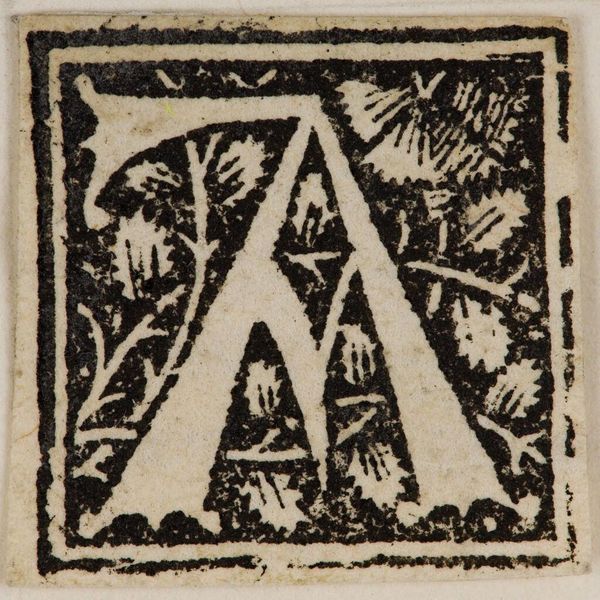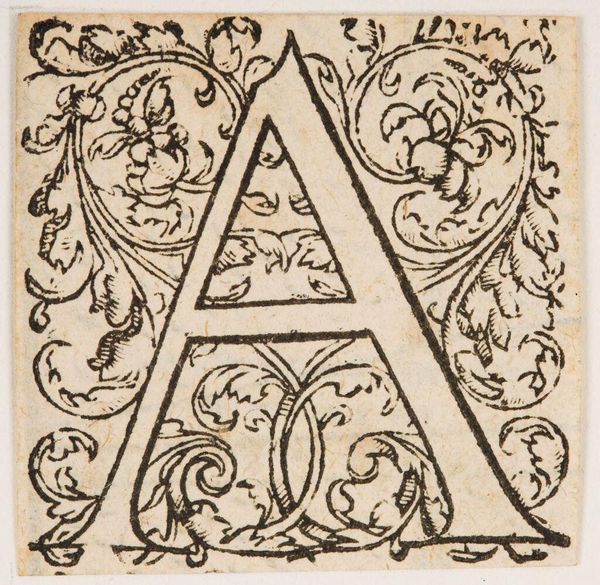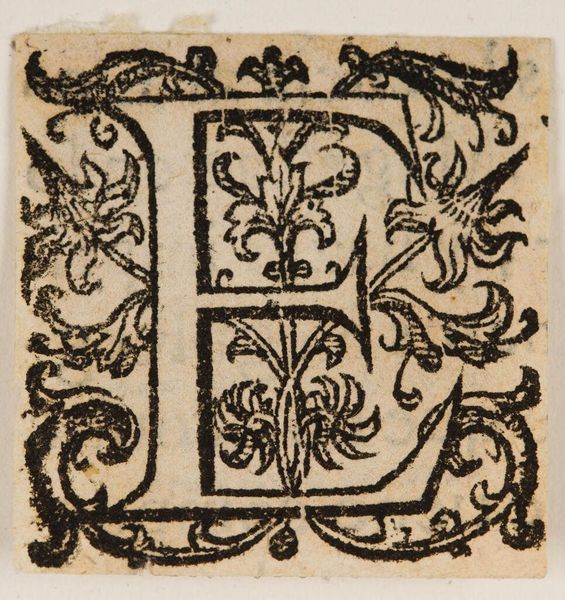
Copyright: CC0 1.0
Editor: This is "Letter A," an anonymous artwork held at the Harvard Art Museums. It looks like an initial, maybe a woodcut? It feels so graphic and bold. What do you see in this piece? Curator: I see a powerful statement on the construction of language and identity. As an initial, the 'A' could be seen as a foundation, a starting point. But for whom? Who gets to define this foundational letter, and what power does that give them? Consider the historical context: anonymous works often signify marginalized voices. Editor: So you're saying the anonymity is a statement in itself? Curator: Precisely! It challenges the traditional art historical narrative that privileges named, often male, artists. This piece asks us to question whose voices are amplified and whose are silenced in the construction of our cultural narratives. Editor: That's a really interesting perspective. I hadn't considered the power dynamics at play in something as seemingly simple as a letter. Curator: Exactly, and that's why art history needs to be intersectional.
Comments
No comments
Be the first to comment and join the conversation on the ultimate creative platform.
